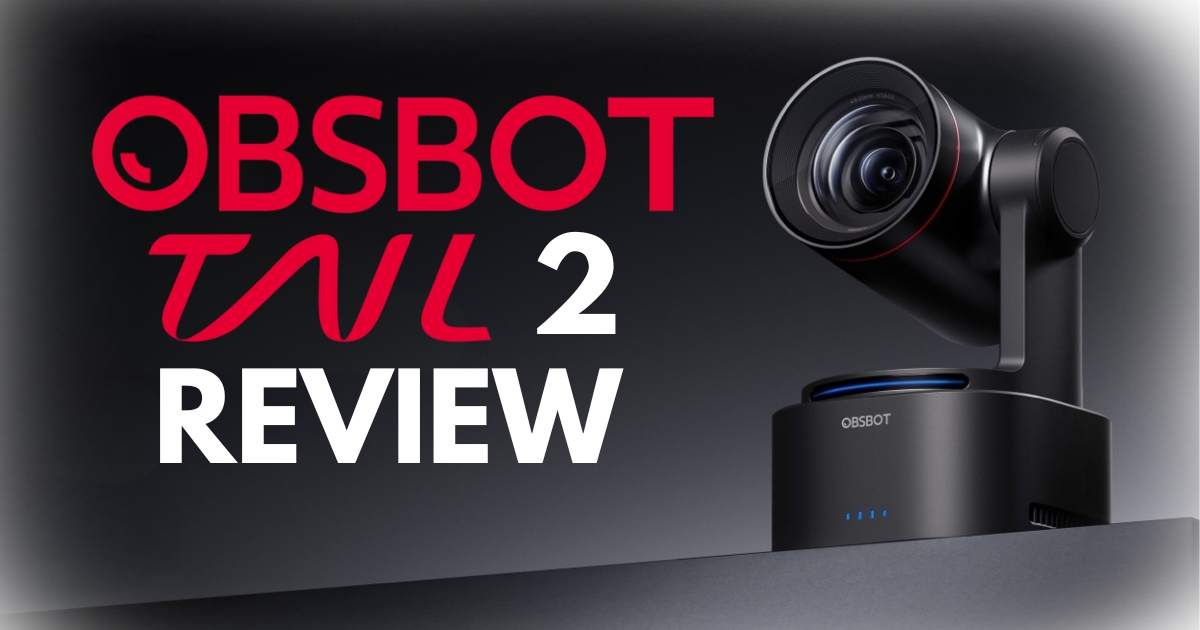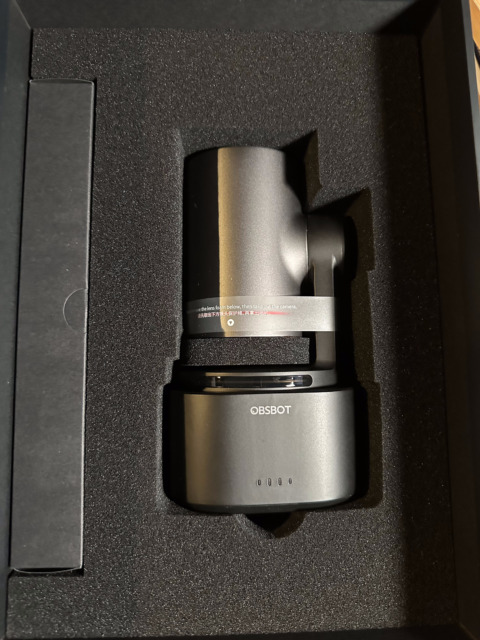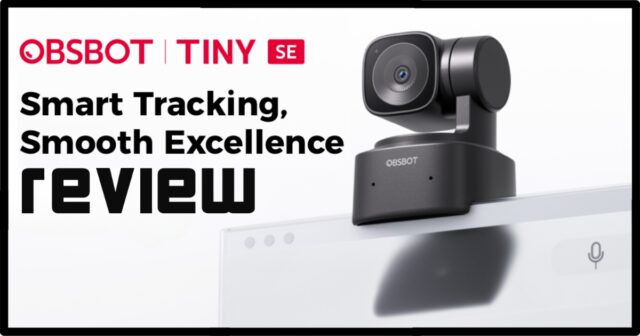OBSBOT Tail 2 Camera Takes Streaming to New Heights!

With the speed at which technology advances, it can feel impossible to keep up at times. The newest phone, the best speakers, the latest camera, all of which are leaps and bounds better than its predecessor, are always around the corner. Given the rapid advancements at impossible velocities, how can someone ensure they are making a solid choice for their equipment? None of us wants to regret a purchase, especially when there’s a lot of money on the line, and let’s be honest, technology isn’t exactly cheap anymore. I have reviewed OBSBOT products here several times now, and they have been consistently at the top of their game. Now let’s see if they continue that pattern with the arrival of their Tail 2 camera!
OBSBOT is known for its AI-powered cameras, providing the public with various technologies that meet their needs at any stage or price. From the tiny, yet powerful, Meet SE, to the mini version of their Tail Air, the Tiny SE, OBSBOT has thought of every possible need streamers may have and has done their best to bring consistency to their products.
That being said, the company has created an entirely new league with the introduction of their Tail 2, which takes recording to the stratosphere. The Tail Air was once the standard we had for OBSBOT cameras, but now the Tail 2 has knocked it out of the park and is ready to take streamers to a whole new height.
[Note: while I am reviewing this item independently and honestly, it should be noted that I received the Tail 2 from OBSBOT for the purpose of this review.]
Unboxing and design of the OBSBOT Tail 2
Having received a few cameras to sample from OBSBOT, I have to admit I wasn’t prepared for the size of the packing for the Tail 2, nor for what was inside the box. The Tail 2 comes in a box that is reminiscent of the Xbox Series X console, although I think the camera’s box is even bigger than that. The hefty package snugly houses the camera in precut Styrofoam, ensuring the Tail 2 remains undamaged before you take it out, which seems impossible given the camera’s heavy-duty construction.
Seriously, I have never held a camera quite so heavy or that feels quite so substantial. When I released it from its packaging, it almost felt like I was holding an award, like an Oscar or a Tony. It was hard to comprehend why the Tail 2 was so heavy; however, it all became clear once we began to test it out.

Appearance-wise, the OBSBOT Tail 2 is similar to some of the previous cameras from the company, specifically the Tail Air and Tiny 2. It features a large circular lens, resembling a telescope in many ways, attached to an arm secured to the base of the camera. Its sleek black design is only punctuated by the name of the company and two small digital parts: one at the base of the arm and the other near the bottom of the camera.
With two pivot points, the Tail 2 allows users to achieve the perfect angle, capturing the footage they need. At the joint between the camera itself and the arm, the Tail 2 swings along a Y-axis, sweeping up and down depending on where you need the focus to be within the camera field, while the second joint allows the camera to swivel left to right, widening the field in which it can capture. This is the first PTZR camera that features hands-free 90-degree rotation, moving effortlessly in any direction regardless of what content you’re attempting to capture.
The design of this OBSBOT camera looks impressive, somehow capturing what looks good from previous models and making it seem even more professional. However, while it might look amazing, it’s what’s inside the camera that makes the Tail 2 an essential piece of technology.
Setting up and using this AI-powered camera
In the standard pack, you get the OBSBOT Tail 2 camera along with a USB-C 3.0 cable, a USB-C to USB-A 3.0 adapter, a USB-C power camera, and 2 2.5 mm male to RS232 MD8 female serial cables. This is everything you’d need to power up the camera and connect it to your computer or system; however, there are still some barriers to integrating it completely.
It should be noted that I have all Apple products, and my desktop is a Mac Studio, so the issues I encountered might not be applicable to every computer brand out there. That being said, I could easily turn on the camera and physically connect it to the studio; however, that’s when the issues set in for me.
The camera itself requires the use of three separate applications (OBSBOT Start, OBSBOT Studio, and OBSBOT Center), which I was already familiar with from my time with the Tail Air and had downloaded on my system. It’s with the OBSBOT Start application where things really fell apart for me. This application had no problem recognizing the camera, but for some reason, it kept crashing when I attempted to connect the Tail 2 to Wi-Fi. This happened over and over for days, often causing frustration and the need to walk away.
Eventually, I had to call in my tech friend, who managed to get it connected and the firmware upgraded, but even he had some problems doing that. The Tail 2 can also connect in various ways to the internet and the computer itself, boasting NDI, SDI, HDMI, and Ethernet connectivity to achieve the best results for your setup. While the setup was perhaps more difficult than it needed to be, it’s all worth it as the power of the Tail 2 became absolutely apparent.
The camera features high resolution with 4K at 60 fps or 1080p at 120 fps, thanks to the integrated 1/1.5” CMOS sensor, which is pretty impressive in my books. The picture is crisp and clear both while recording and in the final product. The OBSBOT Tail 2 also utilizes 3-axis stabilization, ensuring that whatever you’re capturing at any frame rate remains smooth and steady compared to other cameras on the market.
It can also modulate between focuses, depending on whether you want to remain in focus while moving or switch between objects in the same shot. This is possible because of the all-pixel Phase Detection Auto Focus (PDAF) technology. It can also provide consistent footage regardless of too much or too little light with integrated Dual Native ISO tech, with night shoots benefiting from the enhanced 2μm pixel size sensor and new AI noise reduction algorithm as well.
Final thoughts on the latest OBSBOT camera
My tech friend and I spent a weekend putting the OBSBOT Tail 2 through the ringer, and it easily kept up with everything we had it do. There’s so much power in this camera that you won’t find in nearly any other camera on the market. Although this also means that the Tail 2 might be better situated for events and conferences than as a personal podcasting camera.
Not that you couldn’t use it for that. It’s what I tested it out for, but with as much as it’s capable of doing (such as some pretty impressive zooming capabilities), this camera would excel in an event space or for recording a speech or even be utilized for recording a play or musical. Its capacity is designed for a stage larger than personal, although it can easily adapt to meet whatever demands you have.
If you’re looking for a camera that has everything you need for recording podcasts or streaming on the internet for a reasonable price, this might not be the camera for you. However, if you’re looking for the top-of-the-line technology that will not only meet your expectations but blow them out of the water? Then look no further than the Tail 2.
OBSBOT Tiny SE Fits a Studio Camera in the Palm of Your Hands



